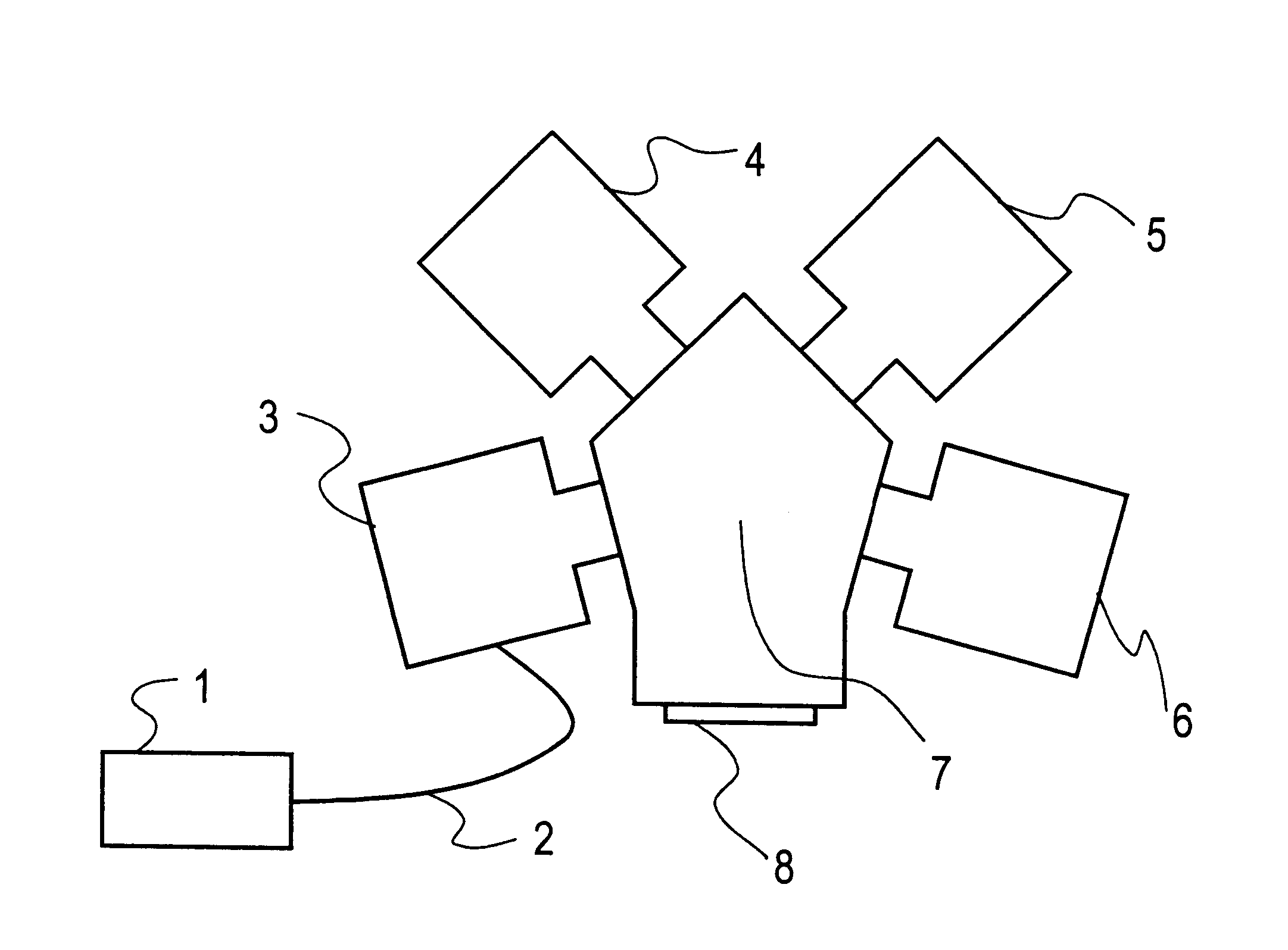Process for the production of an organic electroluminescent device
- Summary
- Abstract
- Description
- Claims
- Application Information
AI Technical Summary
Benefits of technology
Problems solved by technology
Method used
Image
Examples
example 1
On a glass substrate, an ITO transparent electrode (hole-injecting electrode) was layer-formed and patterned so as to constitute pixels of 64 dots.times.7 lines (280.times.280 .mu.m per pixel) having a layer thickness of 85 nm. Then, the substrate having the patterned hole-injection electrode formed was ultrasonically washed with a neutral detergent, with acetone and with ethanol, and it was taken up from the boiling ethanol and dried. Then, the dry substrate was transported into a cleaning chamber, and the surface of the substrate was O.sub.3 -cleaned with an ozonizer for 5 minutes. In this case, O.sub.2 +N.sub.2 gases were used as feed gas, and the gas flow rates were 1 Nl / minute of O.sub.2 and 10 Ncc / minute of N.sub.2. The ozone gas which was generated had a concentration of 7 g / h. The atmospheric pressure in the cleaning chamber was 6.65.times.10.sup.3 Pa.
Then, the substrate was transferred from the cleaning chamber into a layer-forming chamber and fixed to a substrate holder of...
example 2
In Example 1, the cleaning with the ozonizer was replaced with cleaning with a UV lamp, and there was measured a time period required for obtaining a cleaning effect equivalent to that in Example 1, to show that the cleaning with the UV lamp required 30 minutes or more.
PUM
| Property | Measurement | Unit |
|---|---|---|
| Mass flow rate | aaaaa | aaaaa |
| Mass flow rate | aaaaa | aaaaa |
| Mass flow rate | aaaaa | aaaaa |
Abstract
Description
Claims
Application Information
 Login to View More
Login to View More - Generate Ideas
- Intellectual Property
- Life Sciences
- Materials
- Tech Scout
- Unparalleled Data Quality
- Higher Quality Content
- 60% Fewer Hallucinations
Browse by: Latest US Patents, China's latest patents, Technical Efficacy Thesaurus, Application Domain, Technology Topic, Popular Technical Reports.
© 2025 PatSnap. All rights reserved.Legal|Privacy policy|Modern Slavery Act Transparency Statement|Sitemap|About US| Contact US: help@patsnap.com


